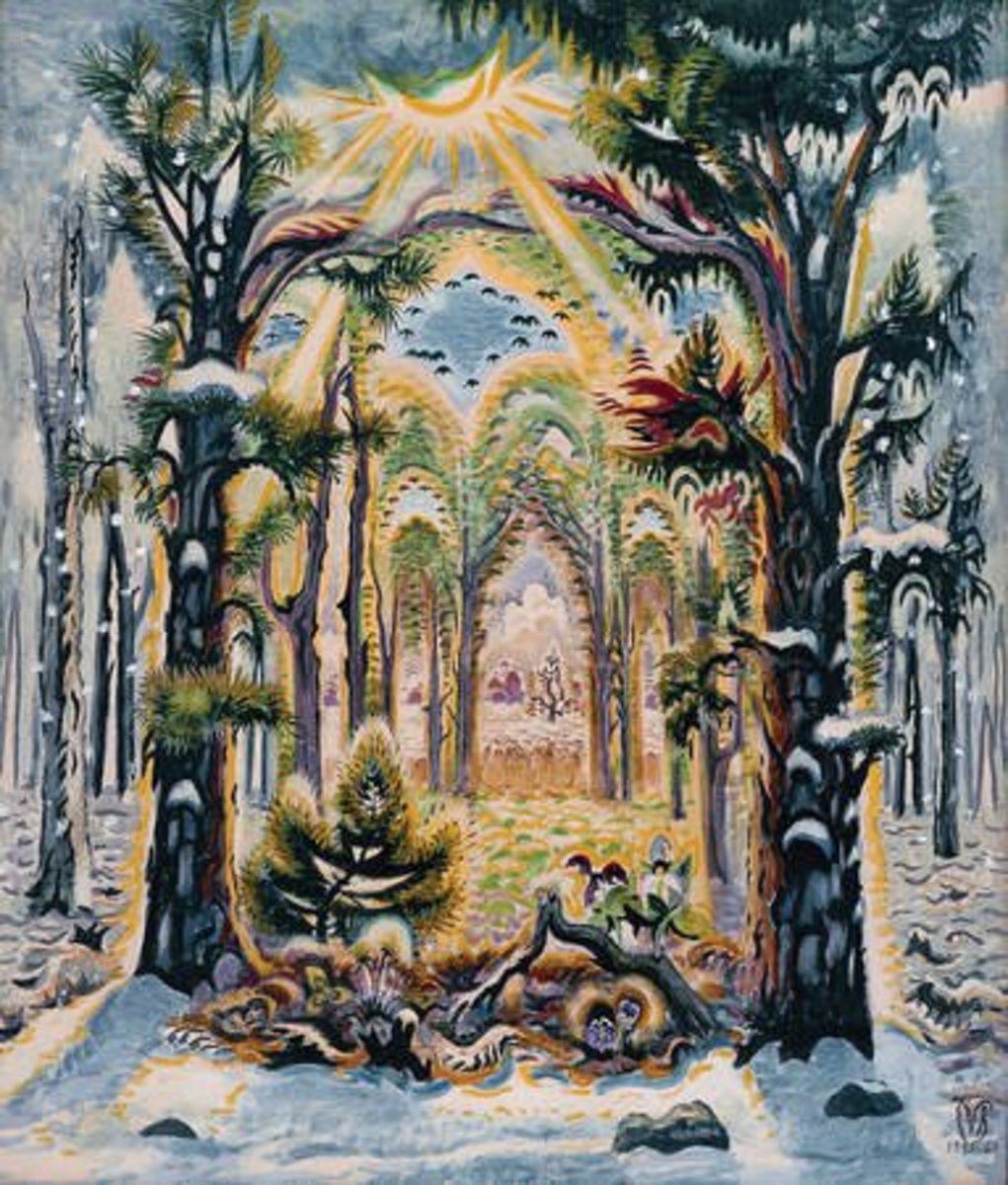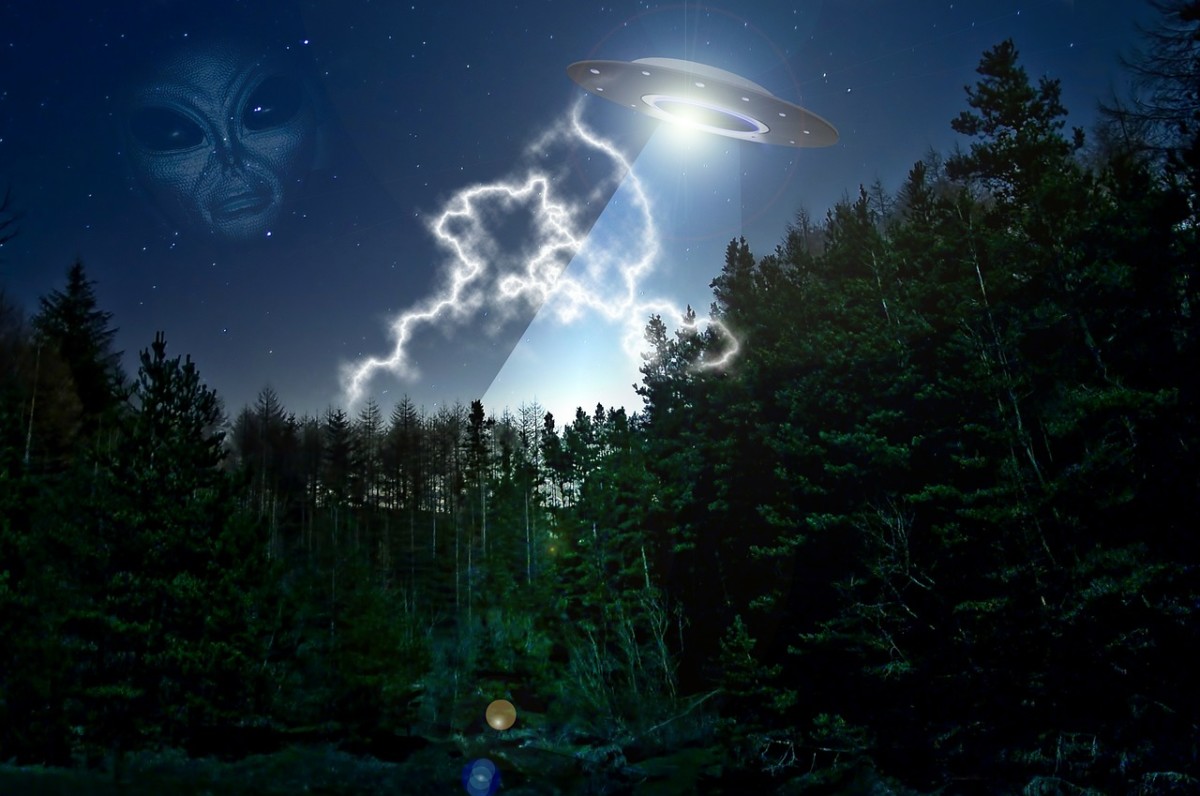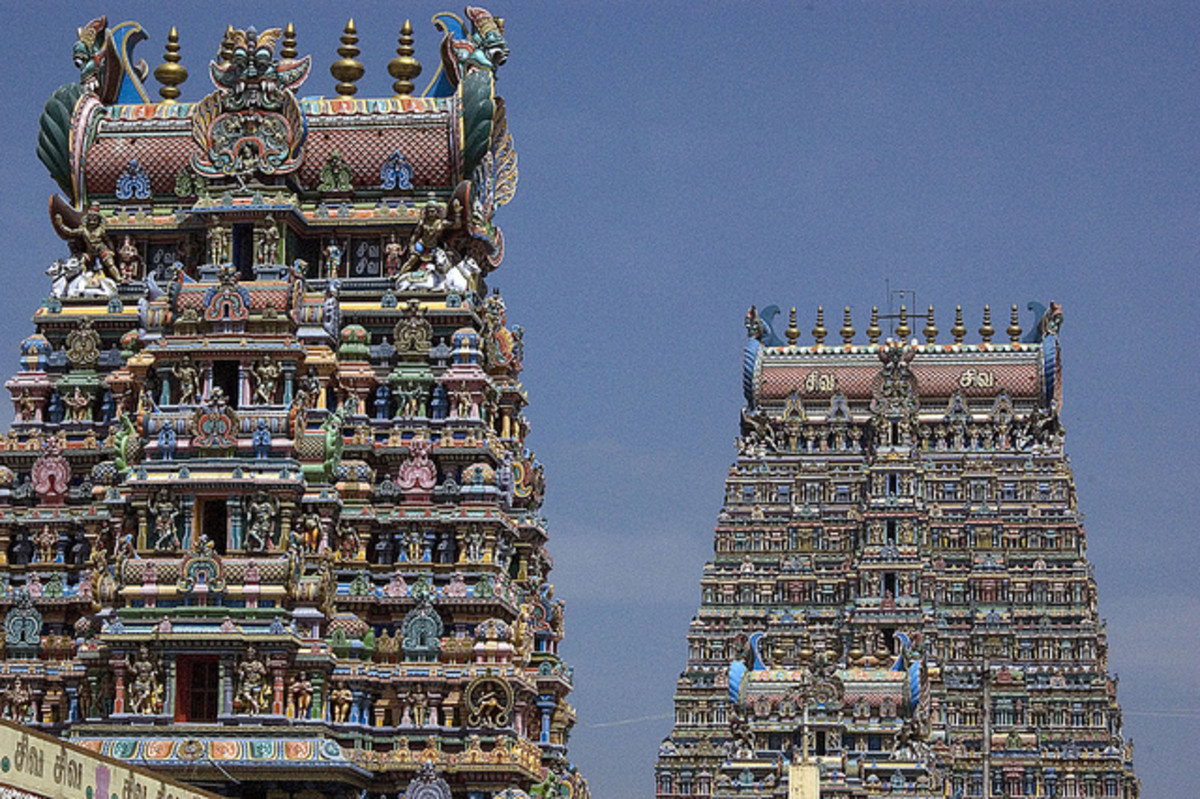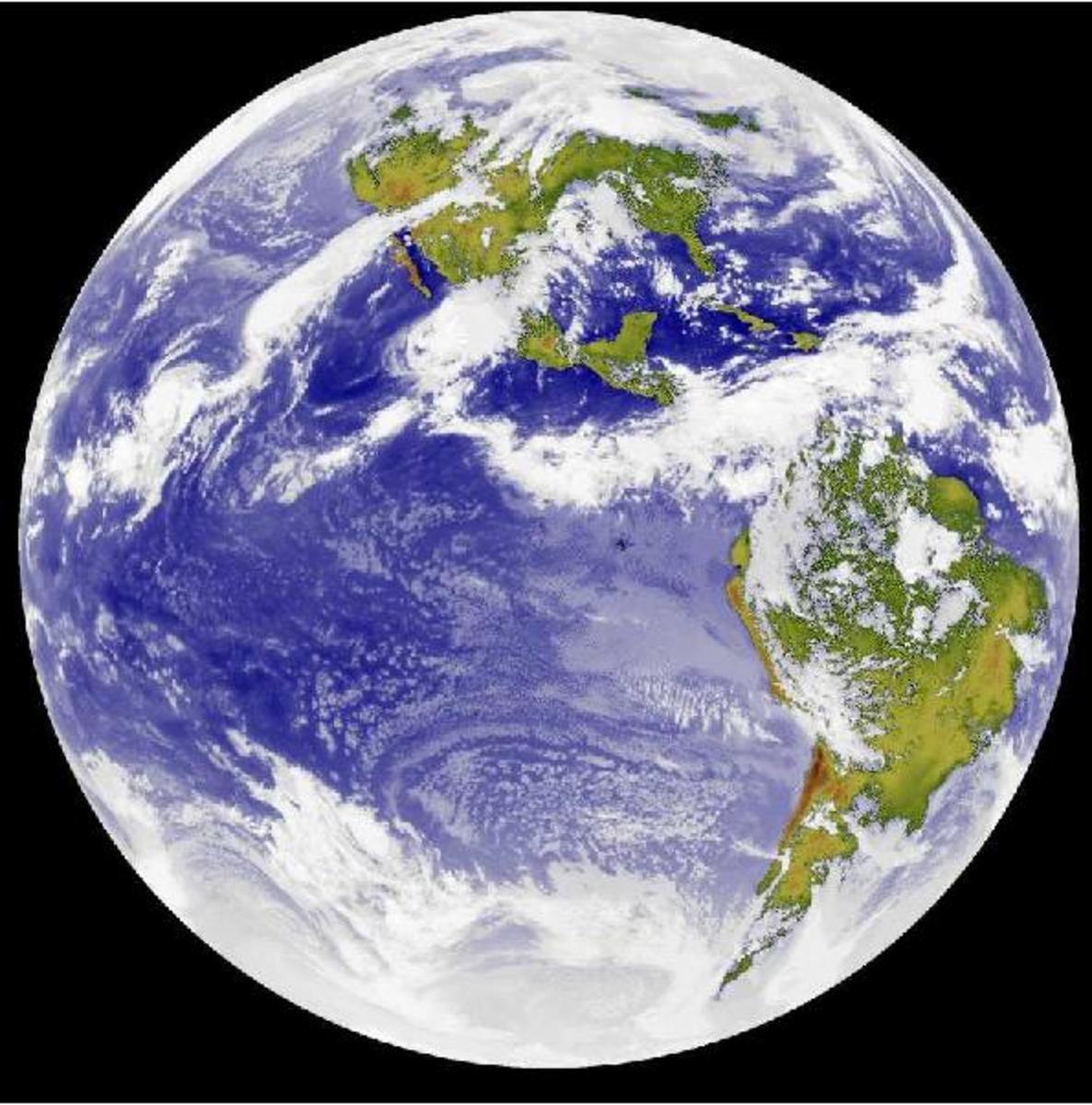Alien symbols on earth
Introduction
When we see the sky in night we always asks a question to ourselves "Are any one lives in stars ? if any one lives there are they ever comes to earth ?" we all knew, no any one can answer it . I am from India and born as Hindu. Hinduism hardly believes that earth is an tiny part of brahmand (universe) in that brahmand there are many planets like earth where some ones like human species (Aliens) are living. Hinduism also hardly indicates that some these aliens looks like humans and more capable then us due to it they knew about us, they can speak many languages and comes in our earth time to time .If we analyze this belief as scientific view can not ignore it because all we knew Hinduism is oldest religion of earth and their beliefs are not changed from beginning.
Indian mythology describes Vimanas which are flying objects and there are also many ancient paintings and historical recordings from many ancient civilizations like England, Japan, Egypt, Arabia etc which talk about UFOs or flying objects in air.
In that article I will try to analyze some symbols which we can see on earth and hardly indicates existence of aliens.I will try to discuss all the scientific , religious and historical facts behind the symbol .
We all knew aliens are an untold question that’s why views of different persons my be different on each symbol but I will try to provide my fair analysis behind each symbol.
1. Charama (India)
A report published in the Times of India on Jul 16, 2014 quoted archaeologist JR Bhagat as saying: “10,000-year-old rock paintings located at Kanker (Central Indian city of Chhattisgarh state) have depicted beings which look like aliens.”
"The findings suggest that humans in prehistoric times may have seen or imagined beings from other planets which still create curiosity among people and researchers. Extensive research is needed for further findings. Chhattisgarh presently doesn't have any such expert who could give clarity on the subject," Bhagat was quoted as saying in the TOI report.
According to the report, there are several beliefs among locals in these villages. While few worship the paintings, others narrate stories they have heard from ancestors about "rohela people" — the small sized ones — who used to land from sky in a round shaped flying object and take away one or two persons of village who never returned.
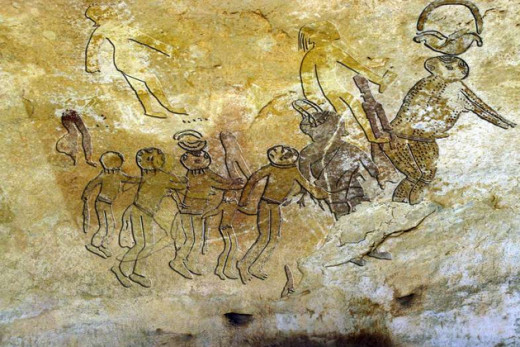
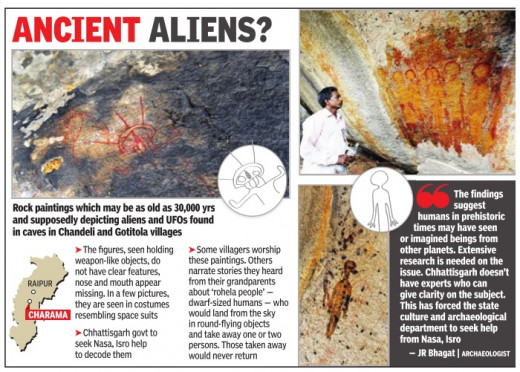
"The fan-like antenna and three legs of vehicle's stand clearly show a similarity to UFO type craft," the archaeologist was quoted in the report.
2. Bhimbetka (भीमबैठका India)
The site complex was discovered by V S Wakankar in 1957 in central India. The Rock Shelters of Bhimbetaka (or Bhim Baithaka - भीमबैठका) lies 9 km from obedullaganj city in the Raisen District of Madhya Pradesh state,and 45 kilometers south of Bhopal (Capital of Madhya Pradesh) at the southern edge of the Vindhya hills. South of these rock shelters are successive ranges of the Satpura hills.
Here some of the shelters were inhabited by Homo erectusmore than 100,000 years ago.Some of the Stone Age rock paintings found among the Bhimbetka rock shelters are approximately 30,000 years old. UNESCO declared it a World Heritage Site in 2003.
The site spread over 10 km in length and about 3 km in width has more than 700 rock shelters, of which over 400 have paintings. The earliest human activities are known from the numerous stone tools including handaxes, cleavers and also the pebble tools.The paintings are mainly executed in red and black with occasional traces of green and yellow. The themes are of great variety, ranging from the mundane daily events of the life in those times to sacred and royal images. These include hunting, dancing, music, horse and elephant riders, animal fighting, honey collection, decoration of bodies, disguises, masking and household scenes.
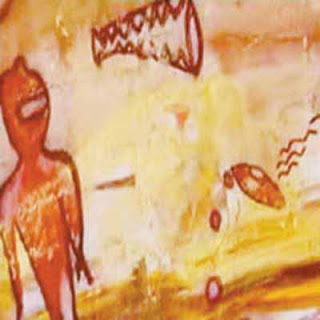
In above picture we can see a clear image of what might be an alien or ET in a space suit can be seen in above cave painting along with a classical flying saucer shaped UFO that appears to be either beaming something down or beaming something up, in what might be an ancient UFO abduction scenario. A force-field or trail of some sort is seen at the rear of the UFO.
Also visible is another object that might depict a wormhole, explaining how aliens were able to reach Earth.Down below is wormhole Time travel concept discussed by Stephen Hawking but in skeptic manner.
3. Japan
This ancient cave painting (below) was discovered in Japan and dates back over 5000 year BC .
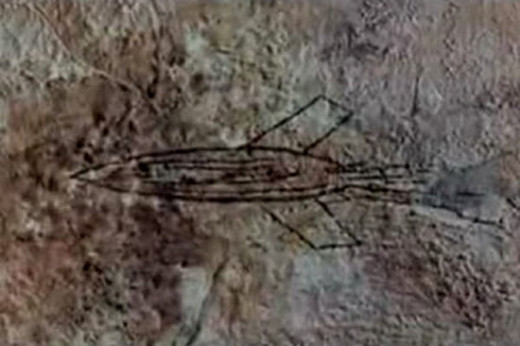
The painting depicts a rocket which looks almost like a modern one. It is still a mystery how ancient people were able to draw these paintings. Certainly, it is not out of their imagination that they can create a picture with exact details. Rockets, space ships, UFOs and other flying objects must have existed in ancient era, which is still unclear to modern scientists. Modern day projectile vehicles too look similar to the object in that painting. That vehicle has a fuselage, two wings and even the exhaust gases are shown to be coming out from the exhaust outlets.
4. Tibet
The next image comes from the 10th Century Tibetan translation of the Sanskrit text "Prajnaparamita Sutra", held at a Japanese museum.

In that enlargement you can see two objects that look like hats, but why are they floating in mid air ? also one of them appears to have port holes on it. Indian Vedic texts are full of descriptions of Vimanas. The Ramayana describes Vimanas as a double decked, circular or cylindrical aircraft with portholes and a dome. It flew with "the speed of the wind" and gave forth a "melodious sound".
5. Nazka Lines (Peru)
The Nazca Lines are a series of ancient geoglyphs located in the Nazca Desert in southern Peru. They were designated as a UNESCO World Heritage Site in 1994. The high, arid plateau stretches more than 80 km (50 mi) between the towns of Nazca and Palpa on the Pampas de Jumana about 400 km south of Lima. Although some local geoglyphs resemble Paracas motifs, scholars believe the Nazca Lines were created by the Nazca culture between 400 and 650 AD. The hundreds of individual figures range in complexity from simple lines to stylized hummingbirds, spiders, monkeys, fish, sharks, orcas, and lizards.
The designs are shallow lines made in the ground by removing the reddish pebbles and uncovering the whitish/grayish ground beneath. Hundreds are simple lines or geometric shapes; more than 70 are zoomorphic designs of animals such as birds, fish, llamas, jaguars, monkeys, or human figures. Other designs include phytomorphic shapes such as trees and flowers. The largest figures are over 200 m (660 ft) across.
The purpose of these lines are still unclear.One hypothesis is that the Nazca people created them to be seen by their gods in the sky. some scientists advanced a purpose related to astronomy and cosmology.
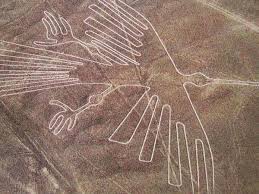
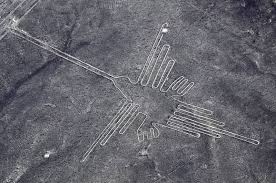
Due to its isolation and to the dry, windless, and stable climate of the plateau, the lines have mostly been naturally preserved. Extremely rare changes in weather may temporarily alter the general designs


